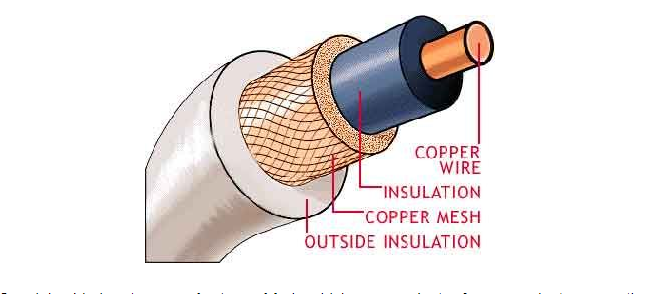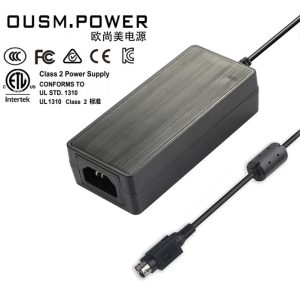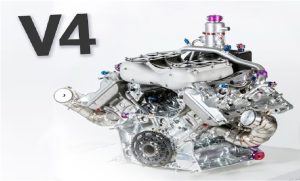What Is Coaxial Cable and How Is It Used?

Coaxial Cable is widely employed by cable operators as well as telephone companies as well as internet service providers around the world to deliver video, data and voice communications to their customers. It is also used extensively in homes.
The Coaxial Speaker Cable was in use for quite some time as a method of transmission (since the beginning of the twentieth century) and offers a variety of unique advantages that ensure reliable, precise transmission.
There are also limitations to it which could cause its replacement in certain instances with fiber optic cable, category cable or, in some cases even through wireless signals.
The secret to the success of coaxial cables is its shielded design. It lets the copper core of the cable to transfer data fast, without being subject to environmental or physical damage due to elements.
The Two Most Common Cable Sizes are RG-6 and RG-11:
- RG means “radio grade”, they are also referred to as cables, which means “radio frequency”.
- The RG-6 cable is utilized to connect drops that are less than 150 feet.
- The RG-11 cable is commonly used for longer drops because of the improved performance for lengths that exceed 150 feet.
- Broadband cables that are used in homes are 75 Ohms.
Drop cables made of coaxial are often terminated with connectors designed to work with the F-type interface defined by SCTE. The F-type interfaces have evolved dramatically and resulted in a variety of termination methods, including crimp screw-on and compression.
In order to connect to make a connection, a male and female connector with the exact design is needed. Male connectors feature a central conductor or pin that protrudes dependent on the type of drop cable, and female connectors feature a receptacle that houses the pin or center conductor to connect with.
If you have problems with improper termination tools, damaged materials or loose connections It’s important to be aware of the result could result in signals entering or exiting. This could result in tiling, signal distortion or even total signal loss.
THE IMPORTANCE OF QUALITY TESTING OF Coaxial Speaker Cable
What is Coaxial Speaker Cable?
Coaxial Speaker Cable is a kind of cable that features an inner conductor, which is enclosed by an insulating coating, which is surrounded by shielding conductive (outer conductor) as well as a protective outer jacket. The image below shows the structure of typical cables. Electricity signals flow through the conductor in the middle.
1. Center conductor copper-clad steel.
2. Clean stripping polymer is used to stop the movement of moisture.
3. Dielectric Polyethylene closed-cell foam that has high VP, which provides mechanical stability.
4. First outer conductor – an aluminum-polymer-aluminum tape securely bonded to the dielectric.
5. The second outer conductor is either a 34 or a 36 AWG aluminum braid
6. Third outer conductor – an additional aluminum-polymer-aluminum tape is used in tri-shield and quad-shield constructions to further enhance HF shield isolation before and after flexure.
7. The fourth outer conductor (optional) Additional either 34 or AWG aluminum braid can be used in quad-shield designs to enhance LF shield isolation in extremely areas of RF noise.
8.Corrosion resistant protectant
- indoor and air is a non-drip substance created to protect against the corrosion of the metallic components in the cable.
- Underground – a fluid compound capable of preventing the movement of moisture.
9. Jacket Jacket UV stabile outer shell made of the polyethylene (PE) or polyvinylchloride (PVC) which is a flame retardant (PVC) to safeguard the cable’s core throughout the lifetime of the cable.
10. Integral messenger is Carbon steel galvanized and galvanized wire support component that is connected to the cable with separable web.
Which Is Better: Coaxial Cable or Fiber Optic Cable?
Both kinds of cables can be used to carry audio, video, as well as other types of data. They provide certain advantages, as well as drawbacks when the process of setting up your network.
The best choice for your needs is based on the distance between your connection as well as the volume of data that you are sending. The fiber optic cable can transmit signals for several miles prior to having to use the use of a repeater. Signal loss is greater in coax cables, which is why it is recommended to use it for short distances. Fiber optic cables can carry more data, and is also more costly. Fiber optic cables are used less often in consumer and residential settings than coaxial cables, however fiber networks are growing across the globe.
Coax cable
Coax cables are straightforward to install and extremely robust. Since fiber offers greater and more efficient data transfer rates than coax and is more reliable. They are ideal for professional networks and multi-dwelling unit. (MDUs) like those that are found on a commercial campus or university, or an apartments. If you’re operating a home-based installation or a medium-capacity data transfer network, the majority of people prefer to use coax cables.
Most companies of today utilize cables to provide their broadband services for business. Cable internet’s main drawback is the fluctuation in speed. In comparison to fiber internet in comparison to. the internet cable the cable internet is typically distributed among many customers. That means that if there’s several subscribers in a particular region that are all using bandwidth-intensive programs on the internet simultaneously and everyone’s speed can fluctuate between 25 and 100 percent of the speed promised.
Concerning the price of fiber in comparison to. coax the latter is usually more expensive initially. But has a longer life. Following installation, the cost for internet access that is dedicated over fiber. Will be more than an internet connection shared by cable. It’s crucial to weigh your alternatives before making this crucial choice that could affect your network’s performance for the near future.







